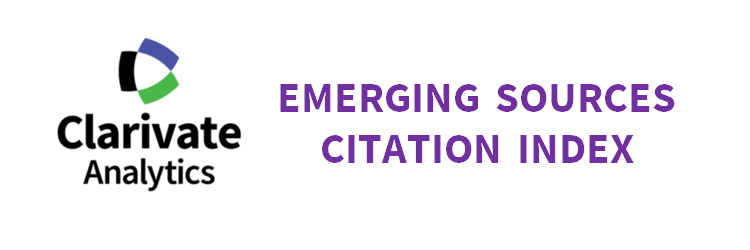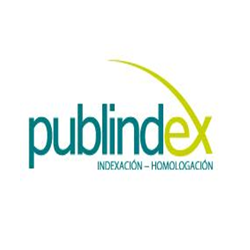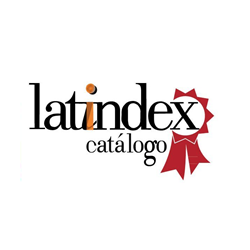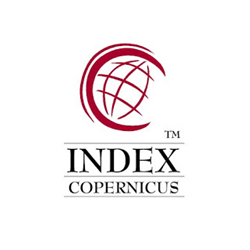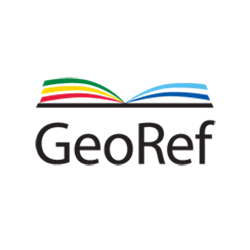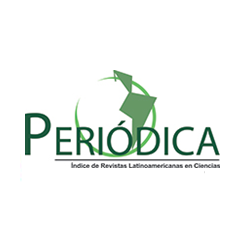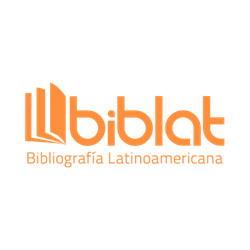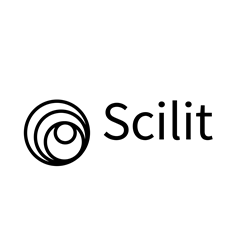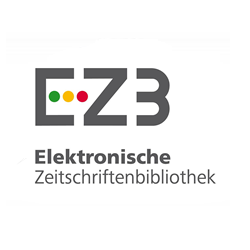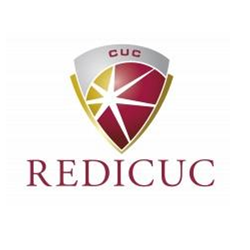Two mathematical approaches to study the phosphorus eutrophication of a wetland in Puerto Rico
DOI:
https://doi.org/10.17981/ingecuc.15.1.2019.06Keywords:
total phosphorus, soluble reactive phosphorus, total nitrogen, equilibrium point, eutrophication, hypereutrophication, grey cluster method, phosphorus dynamicsAbstract
Introduction: Laguna Cartagena (LC), a wetland in Lajas, Puerto Rico, has been negatively impacted by nutrients, mainly phosphorus run-off from agricultural activities until the end of sugar cane cultivation in the late 1900s. This led to P concentration remain high at hypereutrophic state that was irremediable even after a 5-fold reduction in source water nutrient concentration.
Objective: The main goal of this research paper is to apply two different mathematical approaches to assess the eutrophication level of a wetland in Puerto Rico.
Method: Grey Cluster Method (GCM) was used to classify LC’s eutrophic state by applying the International and Chinese trophic standards and two parameters, total phosphorous (TP) and total nitrogen (TN). Mean TP and TN from LC consolidated bottom substrate and flocculence samples were used to classify LC. To address whether LC can recover, soluble reactive phosphorus (SRP) and TP from LC inlet, outlet and center water samples were used to model (differential equation) the input and loss of phosphorus in LC and determine whether an equilibrium point exists. GCM analysis classified LC as a eutrophic wetland using the International standard and hypereutrophic using the Chinese standard.
Results: Trophic state classification did not vary with use of consolidated bottom substrate versus flocculence samples. The differential equation model showed that SRP and TP levels within LC were higher than levels of SRP and TP entering LC, which could be caused by a nutrient recycling process within LC that may predict failure of remediation efforts. An equilibrium point was found at the eutrophic level, which means that even if there is a reduction in phosphorus input, there will not be a change in LC’s eutrophic state.
Conclusions: Chinese trophic standard indicated LC was in a hypertrophic state. Similar results were found using the international standard. The differential equation model showed that LC is irreversible.
Downloads
References
S. R. Carpenter, N. F. Caraco, D. L. Correll, R. W. Howarth, A. N. Sharpley and V. H. Smith, “Nonpoint pollution of surface waters with phosphorus and nitrogen”, Ecological Applications, vol. 8, no. 3, pp. 559—568, Aug. 1998. https://doi.org/10.1890/1051-0761(1998)008[0559:NPOSWW2.0.CO;2
V. H. Smith, “Eutrophication of freshwater and coastal marine ecosystems: a global problem”, Environmental Science and Pollution Research, vol.10, np.2, pp. 126—139, Mar. 2003. https://doi.org/10.1065/espr2002.12.142
S. R. Carpenter, “Eutrophication of aquatic ecosystems: Bistability and soil phosphorus”, Proceedings of the National Academy of Sciences of Sciences of the United States of America, vol. 102, no. 29, pp. 10002—10005, Jul. 2005. https://doi.org/10.1073/pnas.0503959102
P. M. Vitousek, J. Aber, R. Howarth, G. Likens, P. Matson, D. Schindler, W. Schlesinger and D. Tilman, “Human alteration of the global nitrogen cycle causes and consequences”, Ecological Applications, vol. 7, no. 3, 737—750, Aug. 1997. https://doi.org/10.1890/1051-0761(1997)007[0737:HAOTGN2.0.CO;2
D. L. Correll, “Phosphorus: A rate limiting nutrient in surface waters”, Poultry Science, vol. 78, no. 5, pp. 674—682, May. 1999. https://doi.org/10.1093/ps/78.5.674
C. E. Lovelock, M. C. Ball, K. C. Martin and I. C. Feller, “Nutrient enrichment increases mortality of mangroves”, PloS One, vol. 4, no. 5, p. e5600, May. 2009. https://doi.org/10.1371/journal.pone.0005600
A. A. Ansari, S. S. Gill and F. A. Khan, “Eutrophication: threat to aquatic ecosystems”, in Eutrophication: Causes, consequences and control, pp 143—170, Netherlands: Springer, 2010. https://doi.org/10.1007/978-90-481-9625-8_7
[EPA Environmental Protection Agency (US), “Protecting Natural Wetlands: A Guide to Stormwater Best Management Practices”, in: National Service Center for Environmental Publications (NSCEP), Washington (DC): Office of Water (US), 1996. Available in https://nepis.epa.gov/Exe/ZyPDF.cgi/200053GQ.PDF?Dockey=200053GQ.PDF. Accessed 08 Dec 2016.
D. L. Correll, “The role of phosphorus in the eutrophication of receiving waters: a review”, Journal of Environmental Quality, vol. 27, no. 2, pp. 261—266, Mar. 1998. https://doi.org/10.2134/jeq1998.00472425002700020004x
L. Volterra, M. Boualam, A. Ménesguen, J. Duguet, J. Duchemin and X. Bonnefoy. (2002). Eutrophication and Health. World Health Organization & European Commission. Luxembourg. [Online . Available in http://www.ypeka.gr/LinkClick.aspx?fileticket=mb9Q7Nzw5iI%3D&tabid=250&language=el-GR. Accessed 8 Dec 2016.
E. D’Angelo, J. Crutchfield and M. Vandiviere, “Rapid, sensitive, microscale determination of phosphate in water and soil”, Journal of Environmental Quality, vol. 30, no. 6, pp. 2206—2209, Nov. 2001. https://doi.org/10.2134/jeq2001.2206
E. M. Bostic and J. R. White, “Soil phosphorus and vegetation influence on wetland phosphorus release after simulate drought”, Soil Science Society of America Journal, vol. 71, no. 1, pp. 238—244, Jan. 2007. https://doi.org/10.2136/sssaj2006.0137
A. J. Smolders, L. P. Lamers, E. C. Lucassen, G. Van Der Velde and J. G. Roelofs, “Internal eutrophication: How it works and what to do about it – a review”, Chemistry and Ecology, vol. 22, no. 2, pp. 93—111, Jan. 2007. https://doi.org/10.1080/02757540600579730
K. R. Reddy, M. M. Fisher, Y. Wang, J. R. White and J. R. Thomas, “Potential effects of sediment dredging on internal phosphorus loading in a shallow, subtropical lake”, Lake and Reservoir Management, vol. 23, no. 1, pp. 27—38, Jan. 2009. https://doi.org/10.1080/07438140709353907
R. G. Wetzel, Limnology: Lake and River Ecosystems. New York, USA: Elsevier Academic Press, 2001.
M. M. Fisher and K. R. Reddy, “Phosphorus flux from wetland soils affected by long-term nutrient loading”, Journal of Environmental Quality, vol. 30, no. 1, pp. 261—271, Jan. 2001. https://doi.org/10.2134/jeq2001.301261x
L. Bartoszek and J. A. Tomaszek, “Phosphorus distribution in the bottom sediments of the Solina-Myczkowce Reservoirs”, Environment Protection Engineering, vol. 33, no. 2, pp. 25—33, 2007. Available http://epe.pwr.wroc.pl/2007/Bartoszek_2-2007.pdf
L. E. Kinsman-Costello, “Effects of water level fluctuations on phosphorus, iron, sulfur, and nitrogen cycling in shallow freshwater ecosystems”, PhD Dissertation, Michigan State University, East Lansing, MI, USA, 2012. Available in https://lter.kbs.msu.edu/pub/3226
M. Sondergaard, P. J. Jensen and E. Jeppensen, “Retention and internal loading of phosphorus in shallow, eutrophic lakes”, The Scientific World Journal, vol. 1, pp. 427—442, Aug. 2001. http://dx.doi.org/10.1100/tsw.2001.72
J. J. González, B. Pérez and E. Fernández, “Analytical phosphorus fractionation in sewage sludge and sediment samples”, Analytical and Bioanalytical Chemistry, vol. 381, no. 4, pp. 873—878, Feb. 2005. https://doi.org/10.1007/s00216-004-2989-z
B. Böstrom, J. M. Andersen, S. Fleisher and M. Jansson, “Exchange of phosphorus across the sediment-water interface,” Hydrobiologia, vol. 170, no. 1, pp. 229—244, 1998. https://doi.org/10.1007/978-94-009-3109-1_14
K. R. Reddy, R. H. Kadlec, E. Flaig and P. M. Gale, “Phosphorus retention in streams and wetlands: a review”, Critical Reviews in Environmental Science and Technology, vol. 29, no. 1, pp. 83—146, Jun. 2010. https://doi.org/10.1080/10643389991259182
S. P. Seitzinger, “Denitrification in freshwater and coastal marine ecosystems: Ecological and geochemical significance”, Limnology and Oceanography, vol. 33, no. 4, pp. 702—724, Jul. 1988. https://doi.org/10.4319/lo.1988.33.4part2.0702
D. L. Saunders and J. Kalff, “Nitrogen retention in wetlands, lakes and rivers”, Hydrobiologia, vol. 433, no. 1, pp. 205—212, Jan. 2001. https://doi.org/10.1023/A:1017506914063
S. L. Whitmire and S. K. Hamilton, “Rapid removal of nitrate and sulfate in freshwater wetland sediments”, Journal of Environmental Quality, vol. 34, no. 6, pp. 2062—2071, Nov. 2005. https://doi.org/10.2134/jeq2004.0483
A. J. Burgin and S. K. Hamilton, “Have we overemphasized the role of denitrification on aquatic ecosystem? A review of nitrate removal pathway”, Frontiers in the Ecology and the Environment, vol. 5, no. 2, pp. 89—96, Mar. 2007. https://doi.org/10.1890/1540-9295(2007)5[89:HWOTRO2.0.CO;2
H. Wang, A. Appan and J. S. Gulliver, “Modeling of phosphorus dynamics in aquatic sediments: II-examination of model performance”, Water Research, vol. 37, no. 16, pp. 3939—3953, Sep. 2003. https://doi.org/10.1016/S0043-1354(03)00305-1
P. M. Vitousek and R. W. Howarth, “Nitrogen limitation on land and in the sea: How can it occur?” Biochemistry, vol. 13, no. 2, pp. 87—115, Jan. 1991. https://doi.org/10.1007/BF00002772
V. H. Smith, “Effects of nitrogen: phosphorus supply ratios on nitrogen fixation in agricultural and pastoral ecosystems”, Biogeochemistry, vol. 18, no. 1, pp. 19-35, Feb. 1992. https://doi.org/10.1007/BF00000424
K. Reddy, E. M. D’Angelo and W. G. Harris, “Biochemistry of Wetlands”, in: Handbook of Soil Sciences, CRC Press, New York, pp. G89—G119, 2000.
Y. M. Sánchez-Colón, “Effect of water level fluctuations and rainfall on phosphorus release and binding at a tropical freshwater wetland (Laguna Cartagena, PR)”, M.S. Thesis, Dept. Ciencia y Tecnología, Univ. del Turabo, Gurabo, Puerto Rico, 2012.
L. Zhou and S. Xu, “Application of Grey Clustering Method in eutrophication assessment of wetland”, Journal of American Science, vol. 2, no. 4, pp. 53—58, 2006.
[EPA Environmental Protection Agency (US), “Nutrient Criteria Technical Guidance Manual: Rivers and Streams”, in: Office of Water and Office of Science and Technology, 2008. Available in http://www.tampabay.wateratlas.usf.edu/upload/documents/NutrientCriteriaTGMRiversStreams.pdf Accessed 08 Dec 2016.
W. K. Dodds, J. R. Jones and E. B. Welch, “Suggested classification of stream trophic state: distributions of temperature stream types by chlorophyll, total nitrogen and phosphorus”, Water Research, vol. 32, no. 5, pp. 1455—1462, Mar. 1998. https://doi.org/10.1016/S0043-1354(97)00370-9
S. R. Carpenter, D. Ludwig and W. A. Brock, “Management of eutrophication for lakes subject to potentially irreversible change”, Ecological Applications, vol. 9, no. 3, pp. 751-771, Aug. 1999. https://doi.org/10.1890/1051-0761(1999)009[0751:MOEFLS 2.0.CO;2
V. H. Smith, G. D. Tilman and J. C. Nekola, “Eutrophication: impacts of excess nutrient inputs on freshwater, marine, and terrestrial ecosystems”, Environmental Pollution, vol. 100, no. 1, 179—196, Mar. 1999.
American Public Health Association, American Water Works Association and Water Environment Federation, Standard Methods for the Examination of Water and Wastewater. 21st ed. Baltimore, Maryland, USA: Joint Editorial Board, 2005.
[EPA Environmental Protection Agency (US), National Pollutant Discharge Elimination System, Nitrite Method 354.1., 1971.
[EPA Environmental Protection Agency (US), National Pollutant Discharge Elimination System, Nitrate- Nitrite Method 353.2., 1978.
J. L. Deng, “Introduction to Grey System Theory”, The Journal of Grey systems, vol. 1, no. 1, pp. 1—24, Nov. 1989.
J. C. Huang, “The key factor of the internet information technology on the quality of life for the elderly: application of grey system theory”, in: Special Issue on Intelligent Internet Systems. IEEE Advancing Technology for Humanity, no. 33, Dec. 2010. Available in http://ieeesmc.org/newsletters/back/2010_12/main_article2.html
N. Slavek and A. Jović, “Application of Grey System Theory to Software Projects Ranking”, Automatika, vol. 53, no. 3, pp. 284—293, Jan. 2017. https://doi.org/10.7305/automatika.53-3.80
Y. Lin and S. Liu, “A historical introduction to grey systems theory”, in: Systems, Man and Cybernetics, 2004 IEEE International Conference on, vol. 3, pp. 2403—2408, The Hague, Netherlands, 10-13 Oct. 2004. https://doi.org/10.1109/ICSMC.2004.1400689
H. Kuang, D. M. Kilgour and K. W. Hipel, “Grey-bases PROMETHEE II with application to evaluation of source water protection strategies”, Elsevier, Information Sciences, vol. 294, pp. 376—389, Feb. 2015. https://doi.org/10.1016/j.ins.2014.09.035
B. Torres-Velasquez and M. Paredes, “Application of Grey Clustering Method to assess eutrophication in six freshwater Colombian wetlands”, Realidad y Reflexion, vol. 18, no. 47, pp. 147—162, Jun. 2018.
B. Torres-Velasquez, “Two different mathematical approaches to study eutrophication in wetlands: classification of trophic state using Grey System Theory to analyze phosphorus and nitrogen data, and the dynamics of phosphorus using differential equations”, Ph.D. dissertation, Dept. Ciencia y Tecnología, Univ. del Turabo, Puerto Rico, Gurabo, 2016.
R. E. Honrath, "Mass and Energy Balances", in CE251 Environmental Engineering Fundamentals. Michigan Tech. Univ., USA, 1995. Available in http://www.cee.mtu.edu/~reh/courses/ce251/251_notes_dir/node3.html#SECTION00030000000000000000
F. Brauer and C. Castillo-Chávez, Mathematical Models in Population Biology and Epidemiology. New York, USA: Springer, 2012. https://doi.org/10.1007/978-1-4614-1686-9
W. Liu, L. Zhang, J. Zhang, X. Liu, W. Huang, D. Huang and Z. Zheng, “Effects of modified sediments from a eutrophic lake in removing phosphorus and inhibiting phosphatase activity”, Environmental Science and Pollution Research, vol 26, no.2, pp. 1723—1732, Nov. 2018. https://doi.org/10.1007/s11356-018-3754-8
Y. M. Sánchez-Colón, “Identifying nonpoint sources of phosphorus (P) and nitrogen (N) pollution and dynamics, internal eutrophication and anoxia variability at a tropical freshwater wetland (Laguna Cartagena, Puerto Rico)”, Ph.D. Dissertation, Dept. Ciencia y Tecnología, Univ. del Turabo, Puerto Rico, Gurabo, 2015.
D. J. Conley, H. W. Paerl, R. W. Howarth, D. F. Boesch, S. P. Seitzinger, K. E. Havens, C. Lancelot and G. E. Likens, “Controlling eutrophication: nitrogen and phosphorus”, Science, vol. 323, no. 5917, pp. 1014—1015, Feb. 2009. https://doi.org/10.1126/science.1167755
D. P. Hamilton, N. Salmaso and H. W. Paerl, “Mitigating harmful cyanobacterial blooms: strategies for control of nitrogen and phosphorus load”, Aquatic Ecology, vol 50, no. 3, pp 351—366, Sept. 2016. https://doi.org/10.1007/s10452-016-9594-z

Published
How to Cite
Issue
Section
License
Copyright (c) 2019 INGE CUC

This work is licensed under a Creative Commons Attribution-NonCommercial-NoDerivatives 4.0 International License.
Published papers are the exclusive responsibility of their authors and do not necessary reflect the opinions of the editorial committee.
INGE CUC Journal respects the moral rights of its authors, whom must cede the editorial committee the patrimonial rights of the published material. In turn, the authors inform that the current work is unpublished and has not been previously published.
All articles are licensed under a Creative Commons Attribution-NonCommercial-NoDerivatives 4.0 International License.


 English
English
 Español (España)
Español (España)
